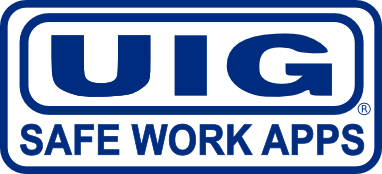Traditional 10 Basic Steps
NOTE: AS OF NOVEMBER 2024, THE UIG TOOLBOX MEETING APP HAS REACHED END-OF-LIFE. EXISTING USERS WILL CONTINUE TO BE ABLE TO USE THE SYSTEM AND RECEIVE SUPPORT UNTIL THEIR CURRENT LICENCES EXPIRE. THE INFORMATION PRESENTED HEREIN IS FOR HISTORICAL PURPOSES ONLY.
If you are interested in gaining early access to the upcoming, new replacement system, please send your details via the Contact Us page.
What are the ten basic steps involved in conducting a paper based toolbox meeting?
Most businesses do not realise that there are ten distinct steps required in order to successfully and correctly undertake toolbox meetings. These are as follows:
Activity 1: Generate meeting content.
Personnel Involved (any/all of):
Business Manager, Administration Officer, Foreman.
Specifics: Toolbox meeting topics need to be written and new topics need to be added each year. If toolbox meeting topics have been purchased, these costs can be removed.
Frequency: Average once per year.
Activity 2: Update meeting content to check for compliance against current legislation/relevance.
Personnel Involved (any/all of):
Business Manager, Administration Officer, Foreman.
Specifics: Each year toolbox meeting topics need to be reviewed and updated to maintain compliance with legislation, best practice and relevance to business activities.
Frequency: Average once per year.
Activity 3: Generate schedule for toolbox meetings.
Personnel Involved (any/all of):
Business Manager, Administration Officer, Foreman.
Specifics: A suitable schedule of meeting topics or groups of topics needs to be assigned to foremen dependant upon work locations, work type, employee skill levels and known/expected site issues.
Frequency: Average once per year.
Activity 4: Select Meeting Topics.
Personnel Involved:
Administration Officer/site foreman.
Specifics: This may be conducted by office personnel or site foreman. Usually occurs once per quarter dependant upon review.
Frequency: Average four times per year.
Activity 5: Allocate meeting topics to foremen.
Personnel Involved:
Administration Officer.
Specifics: Allocation and data entry of toolbox meeting topics into foreman’s toolbox meeting file/folder.
Frequency: Average once a week (or the same frequency per toolbox meeting per foreman).
Activity 6: Issue toolbox text and signature sheet paperwork to foremen.
Personnel Involved:
Administration Officer.
Specifics: Admin officer physically transfers toolbox meeting paperwork to foreman – this happens prior to each meeting.
Frequency: Average once a week (or the same frequency per toolbox meeting per foreman).
Activity 7: Toolbox text and signature sheet paperwork taken to site.
Personnel Involved:
Foreman.
Specifics: Allowance for foreman to travel from the office to site. This cost can be removed if this trip was also for other business related matters.
Frequency: Average once a week (or the same frequency per toolbox meeting per foreman).
Activity 8: Signature Sheet return to office.
Personnel Involved:
Foreman.
Specifics: Allowance for foreman to travel from site back to the office. This cost can be removed if this trip was also for other business related matters.
Frequency: Average once a week (or the same frequency per toolbox meeting per foreman).
Activity 9: Filing and storage of signature sheet.
Personnel Involved:
Administration Officer.
Specifics: Completed toolbox meeting paperwork needs to be safely filed/stored away after each and every meeting.
Frequency: Average once a week (or the same frequency per toolbox meeting per foreman).
Activity 10: Retrieval of signature sheet for audit purposes, management request etc.
Personnel Involved:
Administration Officer.
Specifics: Allowance made for retrieval of completed toolbox meeting paperwork usually as a result of audit, review, accident, near miss, project completion and/or insurance purposes.
Frequency: Average three times per year.
